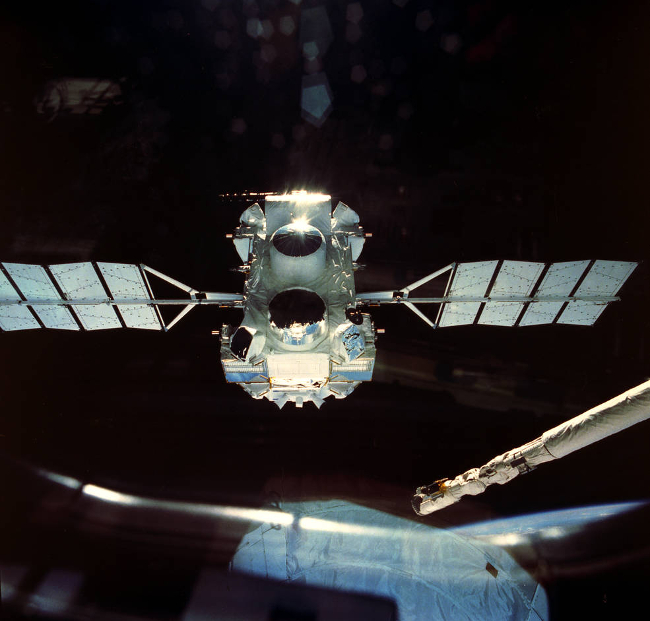
 Credit: NASA/Ken Cameron
Credit: NASA/Ken Cameron
Celebrating CGRO
The Compton Gamma-ray Observatory, or CGRO, was the second of NASA's "Great Observatories". It was designed to resolve important, outstanding mysteries of the Gamma-ray Universe. Gamma-ray radiation is an extremely energetic form of electromagnetic radiation, produced by some of the Universe's most violent events: star explosions, mergers of neutron stars, extreme conditions encountered by matter falling into black holes, and other powerful processes. CGRO was launched 25 years ago this month on April 5, 1991 on the Space Shuttle Atlantis, and deployed from Atlantis on April 7, 1991. It was the heaviest astrophysical payload ever flown at the time of its launch. The mission began in an exciting manner, when CGRO's high-gain antenna got stuck in the payload bay, preventing the observatory's release; in an unscheduled spacewalk, Shuttle astronauts Jay Apt and Jerry Ross were able to free the antenna and allow CGRO to deploy. CGRO carried 4 instruments: the Burst And Transient Source Experiment (BATSE), the Oriented Scintillation Spectrometer Experiment (OSSE), the Imaging Compton Telescope (COMPTEL), and the Energetic Gamma Ray Experiment Telescope (EGRET). CGRO produced a large number of important breakthroughs. Observations with BATSE of more than 2,700 Gamma-ray bursts showed that Gamma-ray bursts were not preferentially located near the Milky Way, establishing that these events were extragalactic and thus extremely energetic. CGRO also mapped the location of antimatter in the Milky Way, provided a history of supernova explosions in the Milky Way over the last million years, and discovered the so-called "Gamma-ray Blazars", galaxies with active, supermassive black holes which produce jets of Gamma-ray emission. CGRO's mission lasted for 9 years, until a gyro failure occurred, and the spacecraft was safely de-orbited for a controlled re-entry over the Pacific.
Published: April 25, 2016
<
HEA Dictionary ● Archive
● Search HEAPOW
● Other Languages
● HEAPOW on Facebook
● Download all Images
● Education ● HEAD
>

Each week the HEASARC
brings you new, exciting and beautiful images from X-ray and Gamma ray
astronomy. Check back each week and be sure to check out the HEAPOW archive!
Page Author: Dr. Michael F. Corcoran
Last modified Tuesday, 27-Feb-2024 10:13:22 EST


